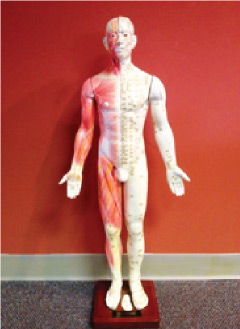Acupuncture can be used in the treatment of:
- Arthritis / Joint Pain
- Muscle Contraction Headaches
- Neck Pain
- Back Pain
- Sciatica
- Multiple Sclerosis
- Allergies / Sinusitis
- Some Respiratory Problems
- Anxiety / Stress
- Fibromyalgia
- Muscle Pain
- Irritable Bowel
- Digestive Disorders
- Carpal Tunel Syndrome
- Fatigue
- Nausea
- Wellness Treatment
- Pain from muscle, arthritis or discs problems
Guidelines for an Acupuncture session:
- Come in comfortable clothes.
- Drink plenty of water before and after the acupuncture treatment.
- No alcohol intake the day of the treatment.
- Avoid strenuous physical activity after treatment.
- Avoid heavy, fatty meals on the same day.
- Let the doctor know of any medications or supplements you are taking while receiving acupuncture.
- If you feel sleepy, lightheaded or tired after acupuncture, do not drive.
- Acupuncture may flare up a condition before it starts producing positive results.
- Notify the doctor if you have bleeding disorders, have a pacemaker, prosthesis or are pregnant.
- Allow the treatment to take its course. After an average of six sessions, the physician, with your input, will decide how effective is the procedure.

Medical Acupuncture
Acupuncture, usually performed by a medical doctor trained in acupuncture techniques that are integrated with the patient’s medical care.
Auricular Acupuncture
A subsystem of acupuncture where problems in the body can be treated through specific acupuncture points in the ears. It is used as a stand alone approach or in combination with body acupuncture points.
Chinese Scalp Acupuncture
A subsystem of acupuncture where problems in the body can be treated through specific acupuncture points in the scalp. It can be used as a stand alone treatment or commonly in combination with body acupuncture points.
Yamamoto Scalp Acupuncture
This is a more modern system of acupuncture that utilizes scalp areas and scalp acupuncture points to treat the patient. It is more commonly used to improve neurological problems.
Electro-Acupuncture
A more modern approach to acupuncture in which selected acupuncture points are needled and electrical stimulation is applied to the needles in specific patterns. Through variations in electrical intensity and frequency applied, the acupuncture input can be manipulated to achieve the desired results. For example; Manipulation of the electrical input can help to relax the muscles, cause anti-inflammatory responses or decrease pain. Proper manipulation of electrical inputs can frequently accelerate the acupuncture results.
Cupping
Technique where cup shaped pieces of equipment are applied to the body by suction. It is frequently used to release tight muscle and scar tissue but it helps with many other problems.

